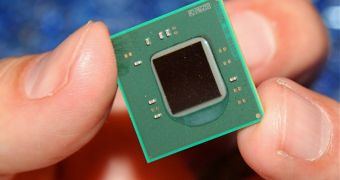Personal computers may be one of the major segments where processors sell in droves, but it appears this situation is not expected to last too long, or at least this is what market analysts from in-Stat believe.
It seems that the growing variation of mobile and small form factor devices has led to a higher importance for smaller platforms.
This, in turn, has led and is still enabling the emergence of new chip designers, meaning that Intel and Advanced Micro Devices might eventually start to no longer be the only relevant brands.
Granted, these two still deliver the most powerful, state-of-the-art chips, but analysts think, at least as far as PC processors are concerned, that market share will drop over the next four years.
The PC market uses a legacy operating system and a limited interface model, a well as a device-centric business model as guidelines.
The handheld device market, on the other hand, is one that adapts rapidly and thrives on newer and better software environments and features, like sensors and touch panels.
As such, In-Stat thinks that mobile processors will come down upon the microprocessor market like a flood, until PC CPUs make up just 10% of the total market.
By the analysts' estimates, this situation will be reached in 2014, while the mobile processor TAM (total available market) will be of about 4 billion by then.
“Even though there is a symbiotic relationship between all the mobile devices because mobile apps are developed on a PC, a user cannot run a mobile app on a PC unless it has a developer environment installed,” said Jim McGregor, chief technology strategist at In-Stat.
“If this divide is not bridged, even the development of mobile apps will eventually move to other platforms that use the same mobile environments like tablets or smartbooks," he added.

 14 DAY TRIAL //
14 DAY TRIAL //